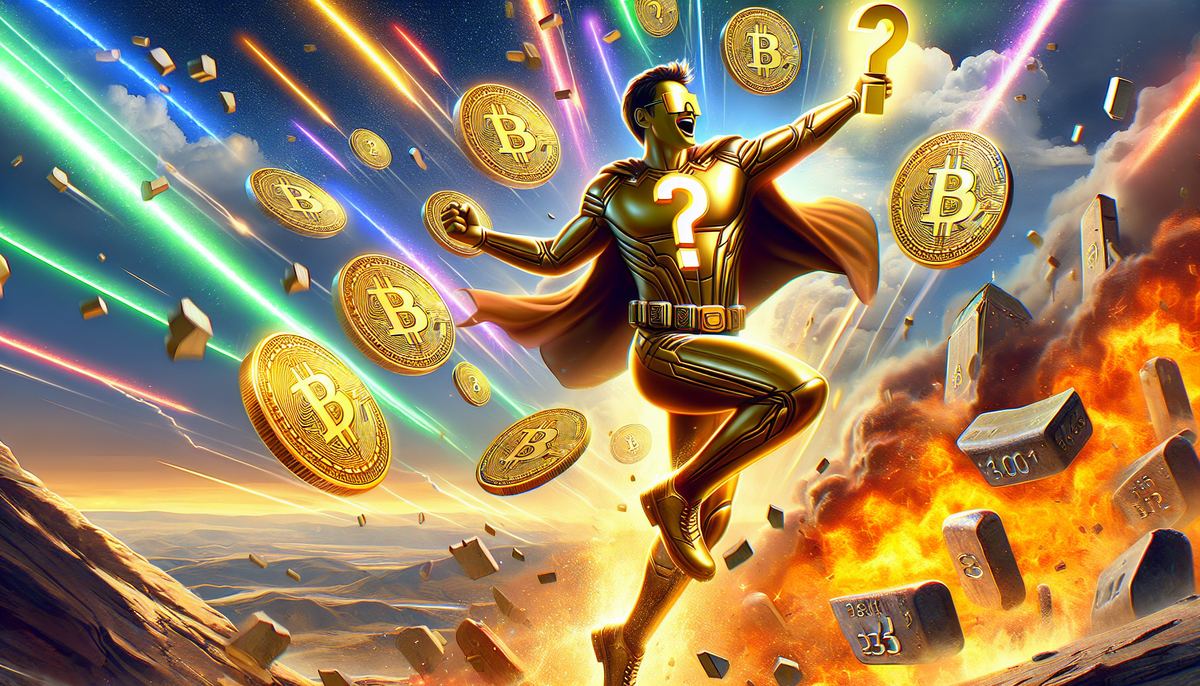Table of Contents
- Orthogonal Trading and Its Undercollateralized Loan
- Understanding Undercollateralized Loans and Why They Are Needed in DeFi
- Collateralized Loans
- Undercollateralized Loans
- What went wrong with Orthogonal Trading?
- Dusk Network’s Solution
- How will undercollateralized loans change DeFi?
Uncollateralized loans have huge potential to be disrupted by DeFi. Dusk Network has the solution to bring fully regulated under collateralized loans on-chain.
Decentralised Finance (DeFi) continues to evolve, and we see more and more services, tools, and products coming into play to meet the needs of the DeFi community. AMMs, stablecoins, and collateralized loans are but a few examples of these, and each develops the DeFi ecosystem in such a way as to bring a traditional financial service on-chain.
The challenges of compliance/regulation remain in this space, the soon to be implemented MiCA regulation for one. Nevertheless, DeFi continues to grow, and evolve, and has become a crucial part of the blockchain ecosystem.
Undercollateralized loans are one of the latest concepts to be disrupted by the world of DeFi. It is a key feature of RegFi (Regulated Finance), but in the DeFi sphere, the discovery phase of how to run, deliver and maintain a viable undercollateralized lending market, is still being worked out.
Orthogonal Trading and Its Undercollateralized Loan
Recently it was discovered that Orthogonal Trading had an under collateralized loan from a pool managed by M11, and issued via Maple Finance’s tooling. Maple Finance and M11 revealed that Orthogonal misrepresented the state of their finances after the FTX debacle, and like many, had a liquidity issue and therefore requested the loan. Since requesting the loan, the company has become insolvent.
The example of Orthogonal indicates that undercollateralized loans are something that DeFi needs to get right before it can become a realistic option for both on and off-chain finance.
It is imperative to understand that we cannot simply employ methods used in RegFi without adapting them to suit DeFi and its specific needs. The two differ vastly in terms of technology, ways of doing business, and products that are applicable in RegFi cannot simply be replicated in DeFi without tailoring them.
Undercollateralized loans play a role in DeFi and are necessary, and Dusk is one of the only, if not the only, protocols that can successfully introduce this into the DeFi ecosystem.
Understanding Undercollateralized Loans and Why They Are Needed in DeFi
Collateralized Loans
Before getting into the nuances of undercollateralized loans, their opposite, collateralized or sometimes over-collateralized loans, need to be explored. Overcollateralized loans are popular within DeFi and refer to a loan in which you put up your cryptocurrencies as collateral and can borrow against it.
An example is depositing $10,000 worth of $ETH, and then borrowing $9,000 worth of stablecoins against it. When the borrower repays their loan, they receive their $ETH back. Should a borrower not be able to repay their loan, or the value of the collateral put up falls below a certain threshold compared to what they have borrowed, the collateral is liquidated to repay the loan.
Collateralized loans have been a key in the development of DeFi. Offering loans on-chain is advantageous in that liquidations are executed on-chain by smart contracts, making them much more efficient and straightforward - if a borrower’s position falls below 1, the position is liquidated.
Undercollateralized Loans
Undercollateralized loans are loans in which you do not put up the full amount of a loan as collateral before being able to borrow funds. A simple example of this is the mortgage industry. Individuals wanting to buy a house most often do not have the liquidity to pay for it in full and therefore turn to a bank for a loan.
Banks review a prospective buyer’s credit history and income and base their decision to award a loan on such data. Banks do however require a certain percentage as a deposit before lending the rest. Should a person fail to repay the loan, the bank would seize the house and sell it to recoup their money.
These types of loans allow the economy to grow by allowing individuals to secure financing. With secured financing, individuals can invest in assets that are expected to appreciate. Over and beyond that, using borrowed funds in many ways encourages economic activity and stimulates growth.
One of the key issues in crypto and DeFi now is that it’s not easy to create value. Yes, we can convert fiat into crypto tokens, and we can move assets, swapping between them, but it is limited within the DeFi sandbox. For DeFi to provide a viable alternative to RegFi, it needs to develop and adapt its undercollateralized loan mechanisms instead of just relying on new money coming on-chain from fiat into crypto asset
What went wrong with Orthogonal Trading?
The company was insolvent but was able to misrepresent the state of its financials and take out a loan it was unable to repay. RegFi has many mechanisms in place to support undercollateralized loans such as banks and regulators that do credit checks, and despite these mechanisms, they can still get it wrong.
In Orthogonal Trading’s case, their “misrepresenting their financial position” had led to a situation where the lending pool managed by M11 now faces irredeemable debt in which the burden of recouping that debt falls on the lender.
In RegFi, when money is lent to a borrower and the borrower cannot repay that debt, the burden falls on the lender. There are some actions you can take to recover your funds, but it may never happen. Lenders need to consider two externalities when deciding to lend money:
- an asset depreciating
- a misevaluation or misrepresentation of the asset
As the risk lies with lenders, many are conservative when deciding who to lend money to, making it difficult for businesses to access necessary financing, while those who can provide a clean credit history have easy access to liquidity.
Overcollateralized, on-chain loans reverse this as borrowers must provide collateral in advance and if they are unable to repay the loan or the value of their collateral falls below the value of what they have borrowed, they are automatically liquidated. The risk in this case falls on the borrower and a smart contract will execute a liquidation automatically.
Dusk firmly believes that we can have the best of both worlds – the growth-facilitating effects of RegFi uncollateralized loans but with the efficiency of smart contracts employed in overcollateralized loans.
Dusk Network’s Solution
Dusk’s goal is to make finance better by bringing regulation to DeFi and one of the ways of doing this is by offering economy-boosting undercollateralized loans, on-chain, in an efficient manner and one that opens the crypto sandbox.
Dusk is a Layer-1 blockchain that has regulatory compliance built in and establishes the new concept of Regulated DeFi (RegDeFi). Regulated DeFi opens the crypto sandbox to the traditional world of finance while providing traditional financial institutions access to blockchain technology. As these two worlds come together, securities, bonds, and other financial products can be tokenized and brought on-chain.
RegFi is currently challenged by a lack of homogeneity between assets. In essence, a house is not the same as a security which is different from fiat. In the world of blockchain, this is not an issue – they are just byte-encoded data.
By tokenizing traditional assets, we can solve this problem. If a value can be put on an asset, it can be integrated on-chain and have the same congruency as all other assets. But what could this offer the financial sector? It means that we can have the capital efficiency of undercollateralized loans with the technological efficiency of blockchain.
RegDeFi – when applied to the lending and borrowing market – removes many issues. Externalities lenders face are removed, and the risk for lenders is decreased as the burden of asset recourse falls on the borrower if the borrower is unable to repay the loan.
But, given the precarious position we find ourselves in in the digital asset world, one of the most important issues it removes is the ability for companies to lie and misrepresent their financial position. Further, and some would argue most importantly, it removes the need for a centralised entity.
Practically, RegDeFi would be applied in the following way:
If you take a loan out to purchase a house, it can be tokenized thereby making on-chain loans for previously off-chain assets possible. The house is now on-chain and linked to a digital identity. Real-world goods and traditional securities are also nominal and can therefore be traded on-chain.
Lenders are now able to repossess assets linked to a borrower’s identities, and in this way, DeFi can progress beyond the world of crypto and become RegDeFi.
How will undercollateralized loans change DeFi?
As it has been previously explained, undercollateralized loans have built the economy by allowing individuals, businesses, and industries to grow based on the promise of future returns. With Dusk Network’s technology and regulatory compliance, this can be brought on-chain.
The potential is endless. Could we in the future buy an asset using $ETH as the deposit? How efficient and transparent will traditional financial institutions become? How many businesses will be built thanks to loans obtained via RegDeFi?
But, most importantly, how will borrowers act knowing that their loan is managed by a smart contract – automatically executed when certain conditions are met – and not by people who can be lied to and manipulated? Finally, there is a way to bridge the gap between on-chain and off-chain.
Disclaimer: This article is provided for informational purposes only. It is not offered or intended to be used as legal, tax, investment, financial, or other advice.
Investment Disclaimer










